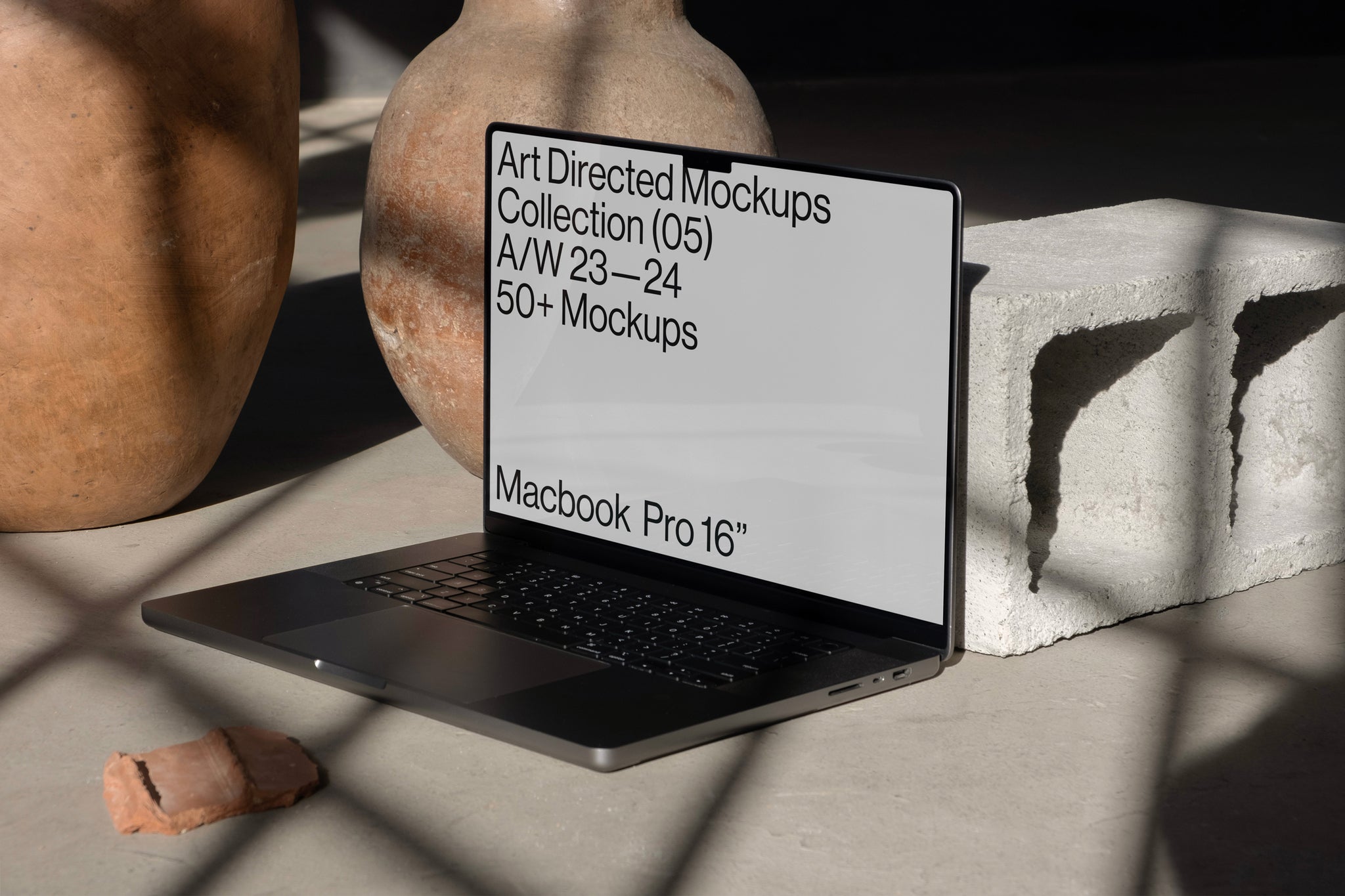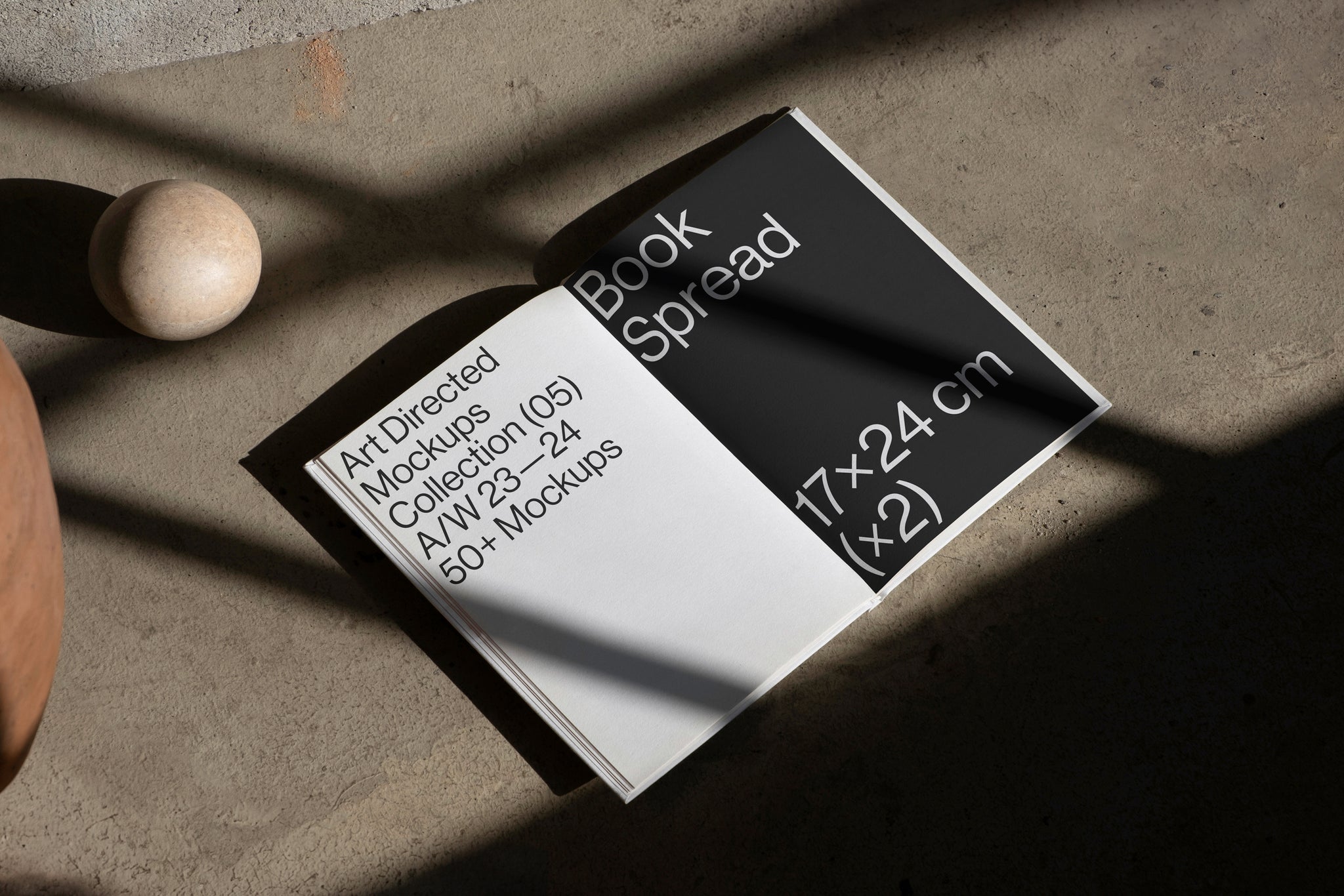Art Directed Mockups: Your Ultimate Guide To Stunning Visuals
Art directed mockups have become a cornerstone of modern design workflows. Whether you're a seasoned designer or just dipping your toes into the creative world, understanding how to leverage these powerful tools can elevate your projects to new heights. Think about it—clients want to see their ideas come alive before they even hit the production phase. And that’s exactly where art directed mockups shine, offering a seamless bridge between imagination and reality.
But hold up. What exactly are art directed mockups? Simply put, they're like a sneak peek into the final product, showcasing your designs in a realistic setting. These mockups go beyond basic templates; they're crafted with precision and creativity, ensuring every detail aligns with your vision. And guess what? They're not just for print designers anymore—web designers, app developers, and even marketers are jumping on board. The versatility is insane.
Here's the deal: creating stunning visuals isn't just about having a good eye for design. It's about telling a story, evoking emotions, and making an impact. Art directed mockups allow you to do all of that and more. In this guide, we'll dive deep into everything you need to know—from what they are, why they matter, to how you can create your own. So, buckle up and let's get started!
Table of Contents
- What Are Art Directed Mockups?
- Why Use Art Directed Mockups?
- Types of Art Directed Mockups
- Tools for Creating Mockups
- The Art Directed Mockup Design Process
- Best Practices for Art Directed Mockups
- Common Mistakes to Avoid
- Tips for Beginners
- Industry Standards and Trends
- Conclusion: Take Your Designs to the Next Level
What Are Art Directed Mockups?
Let's break it down. Art directed mockups are basically high-quality visual representations of your design concepts placed within a real-world context. Imagine showing off your logo design on a coffee cup or previewing your app interface on an iPhone screen. That's the magic of mockups right there. But here's the kicker—they're not just slapped together randomly. Every element is carefully curated to match the intended environment, giving viewers a true-to-life experience.
Now, why does this matter so much? Well, in today's fast-paced digital landscape, first impressions count big time. Clients and stakeholders need to see how their ideas will look in action before committing resources. Art directed mockups provide that clarity, saving everyone time and effort in the long run.
How Are They Different from Regular Mockups?
Regular mockups are great for basic presentations, but art directed ones take things up a notch. They focus on details like lighting, shadows, textures, and even reflections to create a more polished and realistic outcome. Think about it—would you rather show a plain white background or a beautifully lit scene with depth and character?
- Watch Bollyflix Stream Bollywood Movies Online
- Watch Bollywood Hollywood South Indian Movies On Filmyfly
Why Use Art Directed Mockups?
Here's the thing: art directed mockups aren't just a fancy buzzword. They serve a real purpose in the design process. For starters, they help communicate your vision effectively to clients and team members. Instead of relying on abstract descriptions, you can show exactly what you mean. Plus, they make it easier to spot potential issues early on, avoiding costly revisions later.
Another huge benefit? They add a professional touch to your portfolio. Let's face it—clients are more likely to hire someone who can present their work in a visually appealing way. And let's not forget about social media. Sharing polished mockups on platforms like Instagram or Behance can attract more followers and opportunities.
Boosting Client Confidence
Clients love seeing progress, and art directed mockups give them exactly that. By presenting your designs in a realistic setting, you build trust and credibility. It shows that you're not just winging it—you're putting thought and effort into every detail. And when clients feel confident in your abilities, closing deals becomes a whole lot easier.
Types of Art Directed Mockups
Not all mockups are created equal. Depending on your project, you might need different types of art directed mockups. Here's a quick rundown:
- Print Mockups: Perfect for showcasing brochures, business cards, posters, and more.
- Web Mockups: Ideal for web designs, landing pages, and UI/UX concepts.
- App Mockups: Great for mobile apps, showing how screens interact with each other.
- Product Mockups: Used for packaging, apparel, and other physical products.
Each type has its own set of best practices and considerations. For example, print mockups often require attention to bleed and resolution, while app mockups need to account for different screen sizes and orientations.
Which Type Is Right for You?
Choosing the right type depends on your project goals and target audience. If you're designing a logo for a coffee shop, a print mockup on a mug might be more impactful than a web mockup. On the flip side, if you're pitching a new app idea, showing it on various devices could help convey its versatility.
Tools for Creating Mockups
Thankfully, you don't have to start from scratch. There are tons of tools and resources available to help you create stunning art directed mockups. Some popular ones include:
- Adobe Photoshop
- Adobe Illustrator
- Sketch
- Figma
- Canva
Each tool has its strengths, so it's worth experimenting to see which one works best for you. For instance, Photoshop excels at photo manipulation, while Figma shines for collaborative projects.
Free vs Paid Options
Not everyone has the budget for premium software, and that's okay. There are plenty of free tools and resources out there. Websites like Placeit and Mockup World offer pre-made templates that you can customize to fit your needs. Just keep in mind that free options may have limitations compared to paid ones.
The Art Directed Mockup Design Process
Creating art directed mockups involves several steps. First, you need to gather all the necessary assets, including your design files, stock images, and any additional elements you want to include. Next, it's time to set up your canvas and organize your layers. This is where attention to detail comes in—make sure everything is aligned properly and scaled correctly.
Once you've got the basics down, it's time to add those finishing touches. Adjust lighting, shadows, and textures to enhance realism. Don't be afraid to experiment with different effects until you achieve the desired look.
Key Elements to Focus On
When designing art directed mockups, there are a few key elements to keep in mind:
- Lighting: Creates depth and dimension.
- Shadows: Adds realism and context.
- Textures: Enhances tactile appeal.
- Reflections: Makes surfaces look more lifelike.
Mastering these elements takes practice, but the results are well worth it.
Best Practices for Art Directed Mockups
To ensure your mockups stand out, follow these best practices:
- Keep it simple. Avoid cluttering your mockup with too many elements.
- Use high-quality assets. Low-resolution images can ruin the overall effect.
- Stay consistent. Stick to a cohesive style throughout your project.
- Test on different devices. Ensure your mockup looks good across platforms.
Remember, the goal is to create something that looks professional yet approachable. Overcomplicating things can detract from the message you're trying to convey.
Consistency Is Key
Consistency doesn't just apply to individual mockups—it extends to your entire brand identity. If you're designing for a client, make sure their colors, fonts, and overall aesthetic are reflected in your mockups. This creates a seamless connection between your work and their brand.
Common Mistakes to Avoid
Even the best designers make mistakes sometimes. Here are a few pitfalls to watch out for:
- Ignoring proportions. Make sure your design fits naturally within the mockup environment.
- Overusing filters. Subtle effects work better than heavy-handed ones.
- Forgetting context. Always consider how your design will be used in real life.
Avoiding these mistakes can save you time and frustration in the long run. And remember, practice makes perfect. The more you work with art directed mockups, the better you'll get at spotting potential issues.
Learning from Mistakes
Mistakes are part of the learning process. Don't be too hard on yourself if something doesn't turn out as planned. Instead, use it as an opportunity to grow and improve. Every misstep brings you one step closer to mastering the art of mockup creation.
Tips for Beginners
If you're new to art directed mockups, here are a few tips to get you started:
- Start small. Begin with simple projects to build your confidence.
- Seek inspiration. Look at other designers' work to see what resonates with you.
- Join communities. Platforms like Dribbble and Behance are great places to connect with fellow designers.
Don't be afraid to ask questions or seek feedback. The design community is incredibly supportive, and there's always something new to learn.
Building Your Portfolio
Your portfolio is your calling card. Make sure it showcases your best work, including examples of art directed mockups. Highlight projects that demonstrate your range and versatility. And don't forget to include a brief description of each piece, explaining your design choices and process.
Industry Standards and Trends
Stay ahead of the curve by keeping up with industry standards and trends. Currently, minimalist designs with bold typography are all the rage. However, don't be afraid to experiment with unique styles that set you apart from the crowd.
Another trend worth noting is the rise of 3D mockups. These add an extra layer of depth and realism, making them highly sought after by clients. If you're not already familiar with 3D modeling software, now might be a good time to start exploring.
Adapting to Change
The design world is constantly evolving, and so should you. Be open to trying new techniques and technologies. Attend workshops, webinars, and conferences to stay informed and inspired. The more knowledge you have, the better equipped you'll be to tackle any challenge that comes your way.
Conclusion: Take Your Designs to the Next Level
Art directed mockups are more than just pretty pictures—they're powerful tools that can elevate your designs and impress clients. By following the tips and best practices outlined in this guide, you'll be well on your way to mastering the art of mockup creation.
So, what are you waiting for? Dive in and start experimenting. And don't forget to share your creations with the world. Who knows? Your next mockup could be the one that lands you your dream job or client.
Until next time, keep designing, keep learning, and keep pushing boundaries. The design world needs more talented creators like you. Cheers to creating stunning visuals that tell a story!



Detail Author:
- Name : Ariel Schiller
- Username : pfannerstill.jodie
- Email : camden.haag@gmail.com
- Birthdate : 1997-09-11
- Address : 545 Fisher Villages East Zula, NC 31787-6944
- Phone : 1-678-616-9867
- Company : Friesen, Blanda and Powlowski
- Job : Baker
- Bio : Qui culpa saepe nam deleniti consequatur aliquam nostrum. Quod et tempore ut itaque doloribus temporibus omnis. Sed vel quidem facere itaque minus. Non nobis molestias molestiae ex sapiente.
Socials
linkedin:
- url : https://linkedin.com/in/wilfred_official
- username : wilfred_official
- bio : A eligendi est et est facilis voluptas rerum.
- followers : 4604
- following : 2876
instagram:
- url : https://instagram.com/cremin2005
- username : cremin2005
- bio : Perferendis sed suscipit aut necessitatibus aut. Sint similique quaerat neque neque.
- followers : 2387
- following : 729
twitter:
- url : https://twitter.com/wcremin
- username : wcremin
- bio : Fuga qui fugiat vel provident. Voluptates non voluptas accusantium et. Sit ad necessitatibus similique aliquid et consequatur aut.
- followers : 539
- following : 546
facebook:
- url : https://facebook.com/wilfredcremin
- username : wilfredcremin
- bio : Et adipisci minus sed eum. Qui et qui sequi cumque et est.
- followers : 6778
- following : 1219